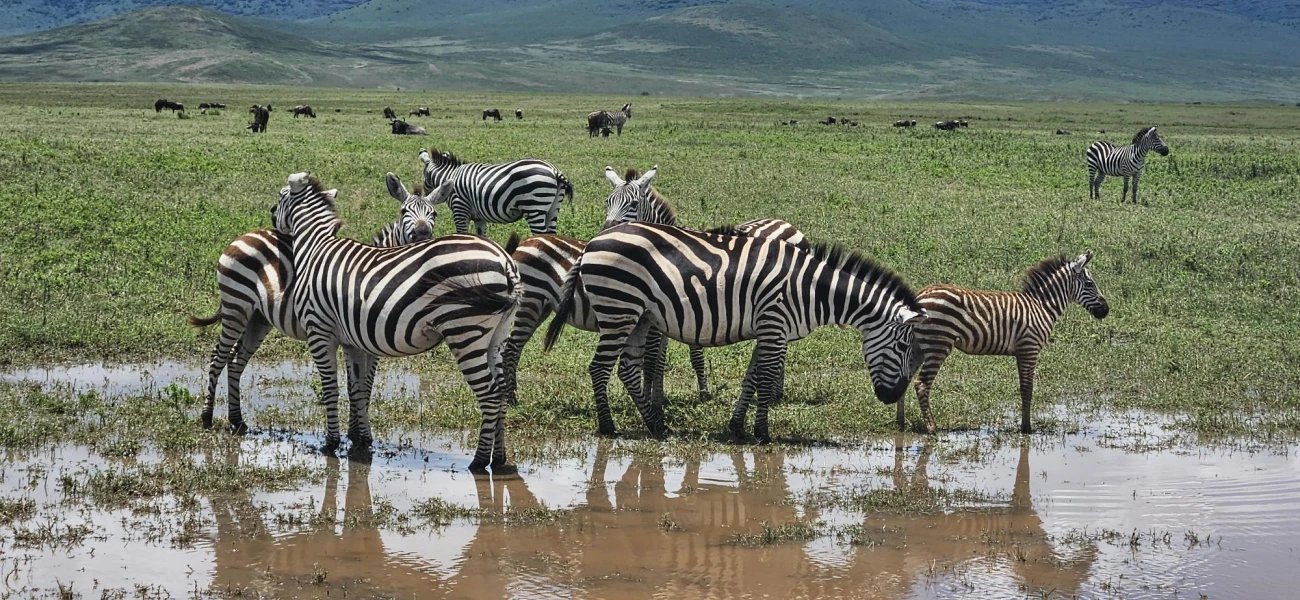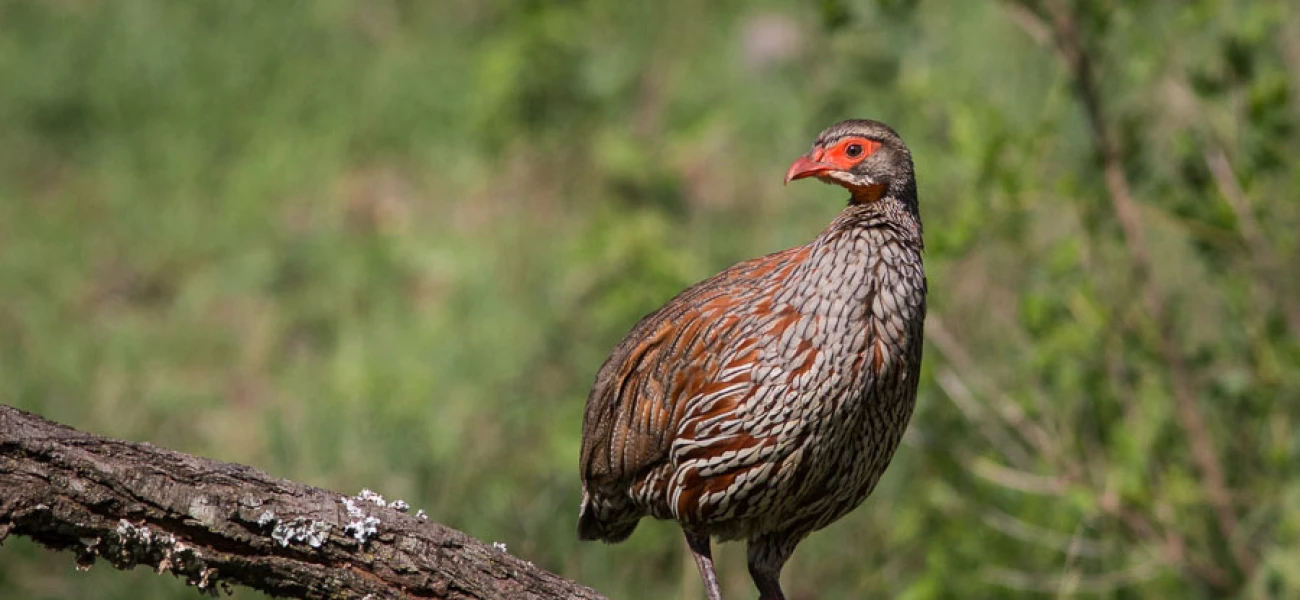Safaris in Tanzania, Kenya, Uganda, Rwanda, and Zanzibar
Filter by:

$600pp (USD)
2 -day safari tarangire and manyara

$720pp (USD)
2 -day safari tarangire and ngorongoro

$860pp (USD)
3 -day safari lake manyara ngorongoro and tarangire

$3250pp (USD)
10 -day photographic safari

$2660pp (USD)
10 -day hadzabe bushmen, tarangire, ngorongoro and serengeti

$4400pp (USD)
10 -day classic luxury safari

$5400pp (USD)
10 -day luxury tanzania safari

$2650pp (USD)
11 -day wildebeest migration river crossing and walking safari

$3200pp (USD)
11 -day mt. kilimanjaro and safari

$5200pp (USD)
14 -day luxury tanzania birding safari
Each of these destinations offers unique safari experiences, from the iconic wildlife of the Serengeti to the lush landscapes of Rwanda and the pristine beaches of Zanzibar. Here’s a comprehensive guide to safaris across these regions:
Tanzania Safaris
1. Serengeti National Park
- Highlights: Known for the Great Migration, abundant wildlife, and classic savannah landscapes.
- Best Time to Visit: June to October for the migration and wildlife viewing; January to March for calving season.
2. Ngorongoro Crater
- Highlights: A UNESCO World Heritage site with a high density of wildlife, including the endangered black rhino.
- Best Time to Visit: Year-round, with optimal wildlife viewing during the dry season (June to October).
3. Tarangire National Park
- Highlights: Famous for its large elephant herds and baobab trees.
- Best Time to Visit: June to October, especially during the dry season when animals congregate around water sources.
4. Selous Game Reserve (now Nyerere National Park)
- Highlights: A large and less crowded park known for walking safaris and boat safaris.
- Best Time to Visit: June to October for dry conditions and wildlife viewing.
5. Ruaha National Park
- Highlights: A remote park with rich wildlife, including large herds of elephants and predators.
- Best Time to Visit: June to October for the dry season and better wildlife sightings.
Kenya Safaris
1. Maasai Mara National Reserve
- Highlights: Renowned for the Great Migration, abundant big cats, and Maasai culture.
- Best Time to Visit: July to October for the migration and wildlife viewing; April to June and November for fewer crowds and lush landscapes.
2. Amboseli National Park
- Highlights: Known for its spectacular views of Mount Kilimanjaro and large elephant herds.
- Best Time to Visit: June to October for dry conditions and clear views of Kilimanjaro.
3. Tsavo National Parks (East and West)
- Highlights: Vast parks with diverse landscapes and wildlife, including large herds of elephants.
- Best Time to Visit: June to October for wildlife viewing; the parks are accessible year-round.
4. Samburu National Reserve
- Highlights: Unique northern species such as the Grevy’s zebra and reticulated giraffe.
- Best Time to Visit: June to October for the dry season and better wildlife sightings.
Uganda Safaris
1. Bwindi Impenetrable National Park
- Highlights: Famous for gorilla trekking and lush, dense forest.
- Best Time to Visit: June to September and December to February for the dry seasons.
2. Queen Elizabeth National Park
- Highlights: Known for its diverse ecosystems, tree-climbing lions, and boat safaris on the Kazinga Channel.
- Best Time to Visit: June to September and December to February for the dry season and wildlife viewing.
3. Murchison Falls National Park
- Highlights: Home to the dramatic Murchison Falls and diverse wildlife, including elephants and lions.
- Best Time to Visit: June to September and December to February for dry conditions and better wildlife sightings.
4. Kibale National Park
- Highlights: Known for chimpanzee trekking and rich birdlife.
- Best Time to Visit: June to September and December to February for the dry season.
Rwanda Safaris
1. Volcanoes National Park
- Highlights: Renowned for gorilla trekking and stunning volcanic landscapes.
- Best Time to Visit: June to September and December to February for the dry seasons.
2. Nyungwe Forest National Park
- Highlights: Famous for chimpanzee trekking, canopy walks, and diverse bird species.
- Best Time to Visit: June to September and December to February for the dry seasons.
3. Akagera National Park
- Highlights: Known for its savannah landscapes and big game, including lions and rhinos.
- Best Time to Visit: June to September and December to February for dry conditions and better wildlife sightings.
Zanzibar Safaris and Beach Holidays
1. Stone Town
- Highlights: Historic town with narrow streets, vibrant markets, and rich cultural heritage.
- Best Time to Visit: June to October for pleasant weather and less rain.
2. Nungwi and Kendwa
- Highlights: Beautiful beaches with clear waters, perfect for swimming, diving, and relaxing.
- Best Time to Visit: June to October and January to February for the best beach weather.
3. Paje and Jambiani
- Highlights: Popular for kite surfing and laid-back beach vibes.
- Best Time to Visit: June to October for consistent winds and ideal kite surfing conditions.
4. Chumbe Island
- Highlights: A private island with eco-friendly accommodation and excellent snorkeling opportunities.
- Best Time to Visit: June to October for optimal weather and marine conditions.
Travel Tips
- Visas and Vaccinations: Check visa requirements and health precautions for each country.
- Packing: Pack layers for varying temperatures, sturdy footwear for safaris, and beachwear for Zanzibar.
- Guided Safaris: Opt for guided safaris for expert knowledge and safety.
- Travel Insurance: Ensure you have comprehensive travel insurance covering health, accidents, and trip cancellations.
Conclusion
Combining safaris across Tanzania, Kenya, Uganda, Rwanda, and Zanzibar offers a diverse and enriching travel experience. From the vast plains of the Serengeti to the lush forests of Bwindi and the pristine beaches of Zanzibar, each destination provides unique opportunities to explore wildlife, landscapes, and cultures.
FAQ About Safari
Essentials include lightweight, neutral-colored clothing, a hat, sunscreen, insect repellent, comfortable walking shoes, and a good pair of binoculars for wildlife viewing.
The Great Migration is the annual movement of millions of wildebeests and zebras between Tanzania's Serengeti and Kenya's Maasai Mara. It typically occurs from July to October in the Serengeti.
Tanzania is generally considered safe for tourists, including safari-goers. However, it's essential to follow local advice and safety guidelines provided by your tour operator.
Yes, many tourists combine a mainland safari with a visit to Zanzibar to enjoy the beautiful beaches and cultural experiences on the island.
Most travelers to Tanzania require a visa, which can be obtained upon arrival at the airport or in advance from a Tanzanian embassy or consulate.
The best time for safaris in Tanzania is during the dry season, from June to October. This is when wildlife congregates around water sources, making it easier to spot animals.
Some of the top parks and reserves include the Serengeti National Park, Ngorongoro Conservation Area, Tarangire National Park, Lake Manyara National Park, and Selous Game Reserve.
Tanzania is home to the Big Five (lion, elephant, buffalo, leopard, and rhinoceros), as well as cheetahs, zebras, giraffes, hippos, crocodiles, and a wide variety of bird species.
A typical safari in Tanzania can range from 3 to 10 days or more, depending on your interests and the destinations you want to visit.
Accommodation options vary from luxury lodges and tented camps to budget-friendly campsites. You can choose accommodations from us that suit your budget and preferences.







